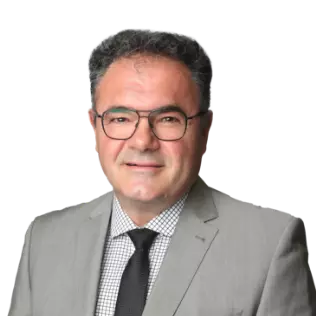Shoulder Dislocation: Treatment, Causes & Diagnosis
Written By: Dr. Mohamed Ghanem
Updated On:January 26, 2025

What is Shoulder Dislocation?
A dislocated shoulder is an injury when the upper arm bone bursts out of the shoulder blade's cup-shaped socket. The shoulder is the most flexible joint in the body, which increases the likelihood of dislocation.
Seek immediate medical assistance if you think your shoulder may be dislocated. Most patients recover complete shoulder function within a few weeks. The joint may be more prone to further dislocations once it dislocates, though.
Causes of Shoulder Dislocation
The body's shoulder joint dislocates more frequently than any other. The shoulder can dislocate forward, backward, or downward since it can move in several directions. It could totally or partly dislocate.
The front of the shoulder is where most dislocations occur. The shoulder's ligaments, the connective tissue that holds the bones together, can be strained or ripped, which frequently makes the dislocation worse.
The bones can only be forced out of position by a powerful force, such as a swift hit to the shoulder. Extreme shoulder twisting can cause the upper arm bone's ball to come out of the shoulder socket. The upper arm bone partially extends into and partially retracts from the shoulder socket during a partial dislocation.
A dislocated shoulder can result from several factors, such as:
- Sports-related injuries.
- Trauma unrelated to sports, such as a car accident
- Falls
Symptoms of Shoulder Dislocation
Among the signs of a dislocated shoulder are the following:
- A shoulder that is obviously misaligned or malformed
- Inflammation or bruising
- Sharp pain
- A joint that cannot be moved
Numbness, weakness, or tingling around the injury, such as in the neck or down the arm, are additional side effects of shoulder dislocation. It's possible that the shoulder's muscles will spasm, which will make the discomfort worse.
When to see a doctor for Shoulder Dislocation?
If your shoulder seems to be dislocated, get medical attention immediately.
By the time you get to the doctor, be sure to keep the joint still by putting the shoulder joint in a sling or brace while it is in this posture. Avoid attempting to move or push the shoulder back into position. This might harm the blood vessels, nerves, muscles, and ligaments close to the shoulder joint. Also, consider icing the injured joint. Ice lessens the discomfort and swelling.
Shoulder Dislocation Risk Factors
Everybody can dislocate their shoulder. However, young adults in their teens and early 20s are more likely to sustain dislocated shoulders, particularly athletes who play contact sports.
Shoulder Dislocation Complications
A dislocated shoulder may result in the following complications:
- Torn muscles, ligaments, and tendons that support the shoulder joint
- Shoulder joint with nerve or blood vessel damage
- More likely to experience dislocations again, especially if the injury is severe
Moreover, the shoulder may need surgery to repair strained or torn ligaments or tendons, as well as damaged nerves or blood vessels.
Shoulder Dislocation Diagnosis
A healthcare provider assesses the affected area to identify signs of nerve or blood vessel damage, as well as any feelings of pain, swelling, or irregularity. An X-ray of the shoulder joint can potentially show the dislocation, and it might also unveil fractured bones or additional injuries to the shoulder joint.
Shoulder Dislocation Treatment
Treatment for a dislocated shoulder may include:
- Closed reduction. During this surgery, certain delicate movements could be used to assist realign the shoulder bones. Before manipulating the shoulder bones, a muscle relaxant, sedative, or, in rare cases, general anesthesia may be administered, depending on the intensity of the discomfort and swelling. Severe discomfort should almost instantly subside after the shoulder bones are put back in position.
- Surgery. Surgical intervention may be considered for individuals who regularly suffer shoulder dislocations, even after strengthening and rehabilitation efforts, particularly if their shoulder joints or ligaments are found to be weak. In exceptional cases, surgery may be required to mend injured blood vessels or nerves. Additionally, for young athletes, surgical procedures could potentially reduce the risk of future shoulder dislocations.
- Immobilization. After closed reduction, a specialized splint or sling can be worn to immobilize the shoulder and restrict its movement for a few weeks.
- Medication. During the healing process of the shoulder, the use of painkillers or muscle relaxants can provide relief and enhance your comfort.
- Rehabilitation. A rehabilitation program can aid in regaining the shoulder joint's range of motion, strength, and stability after the splint or sling is no longer required.
A relatively minor shoulder dislocation that doesn't involve significant nerve or tissue damage should generally improve over the course of a few weeks. Before resuming regular activities, one must have restored strength, a pain-free range of motion, and a complete range of motion.
Resuming exercise too soon after a shoulder dislocation can increase the risk of re-injury to the shoulder joint.
Shoulder Dislocation Prevention
To lessen the risk of shoulder dislocation:
- Avoid falls and other shoulder injuries by exercising caution.
- Wear safety equipment when participating in contact sports.
- Regular exercise will keep your muscles and joints strong and flexible.
- Future shoulder dislocations are more likely if you already have a dislocated shoulder joint. Continue performing the strength and stability exercises recommended for the injury to help prevent a recurrence.
References
Cunningham, N. J. (2005). Techniques for reduction of anteroinferior shoulder dislocation. Emergency Medicine Australasia, 17(5‐6), 463-471.
Hayes, K., Callanan, M., Walton, J., Paxinos, A., & Murrell, G. A. (2002). Shoulder instability: management and rehabilitation. Journal of Orthopaedic & Sports Physical Therapy, 32(10), 497-509.
Murthi, A. M., & Ramirez, M. A. (2012). Shoulder dislocation in the older patient. JAAOS-Journal of the American Academy of Orthopaedic Surgeons, 20(10), 615-622.
Secko, M. A., Reardon, L., Gottlieb, M., Morley, E. J., Lohse, M. R., Thode Jr, H. C., & Singer, A. J. (2020). Musculoskeletal ultrasonography to diagnose dislocated shoulders: a prospective cohort. Annals of Emergency Medicine, 76(2), 119-128.
Simonet, W. T., & Cofield, R. H. (1984). Prognosis in anterior shoulder dislocation. The American journal of sports medicine, 12(1), 19-24.
Youm, T., Takemoto, R., & Park, B. K. H. (2014). Acute management of shoulder dislocations. JAAOS-Journal of the American Academy of Orthopaedic Surgeons, 22(12), 761-771.
Meet our doctors from the Orthopaedics department





















































